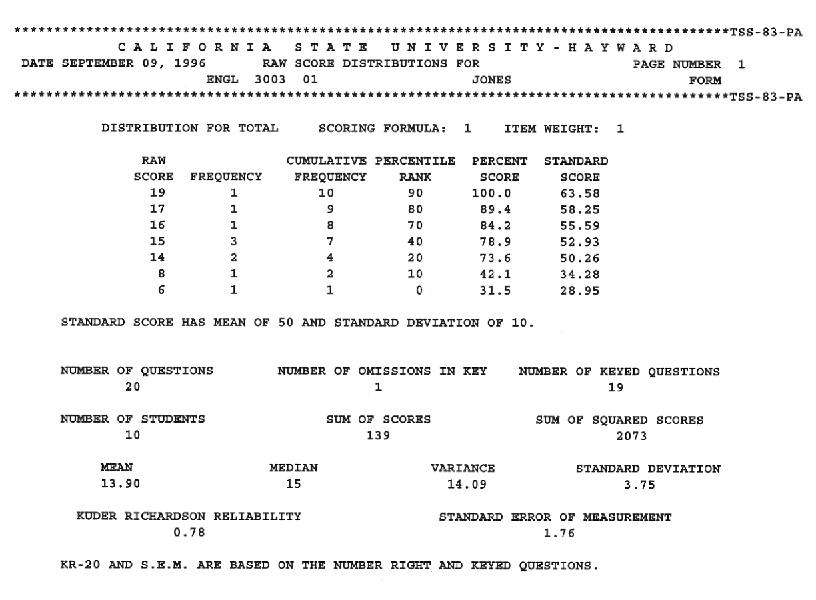Summary Statistics
- Number of Questions: total number of questions on the test.
- Number of Omissions in Key: number of items left blank on the key
- Number of Keyed Questions: number of items actually scored.
- Number of Students: number of answer sheets computer reads.
Sum of Scores: sum of the raw scores obtained by each student (used to compute the variance and standard deviation). - Sum of Squared Scores: sum of the squared raw scores obtained from each student (used to compute the variance and standard deviation).
- Mean: the average score, calculated by dividing the sum of scores by the number of examinees.
- Median: the middle raw score of the distribution; 50 percent of the obtained raw scores are higher and 50 percent are lower than the median.
- Variance: the average of the squared deviations of the raw scores from the mean.
- Standard Deviation: the square root of the variance. If the distribution of scores is normal, approximately two-thirds of the scores will fall within one standard deviation above and below the mean.
- Kuder Richardson Reliability (KR-20): a measure of response consistency across all items. KR-20 will usually range from about .20 to about .95. A high KR-20 means that the test or subtest can be considered as a homogeneous pool of items having a common focus.
- Standard Error of Measurement (S.E.M.): a measure of the reliability of any raw score. The S.E.M. yields an estimate of the range of raw score values within which a student's "true" score is likely to fall.
